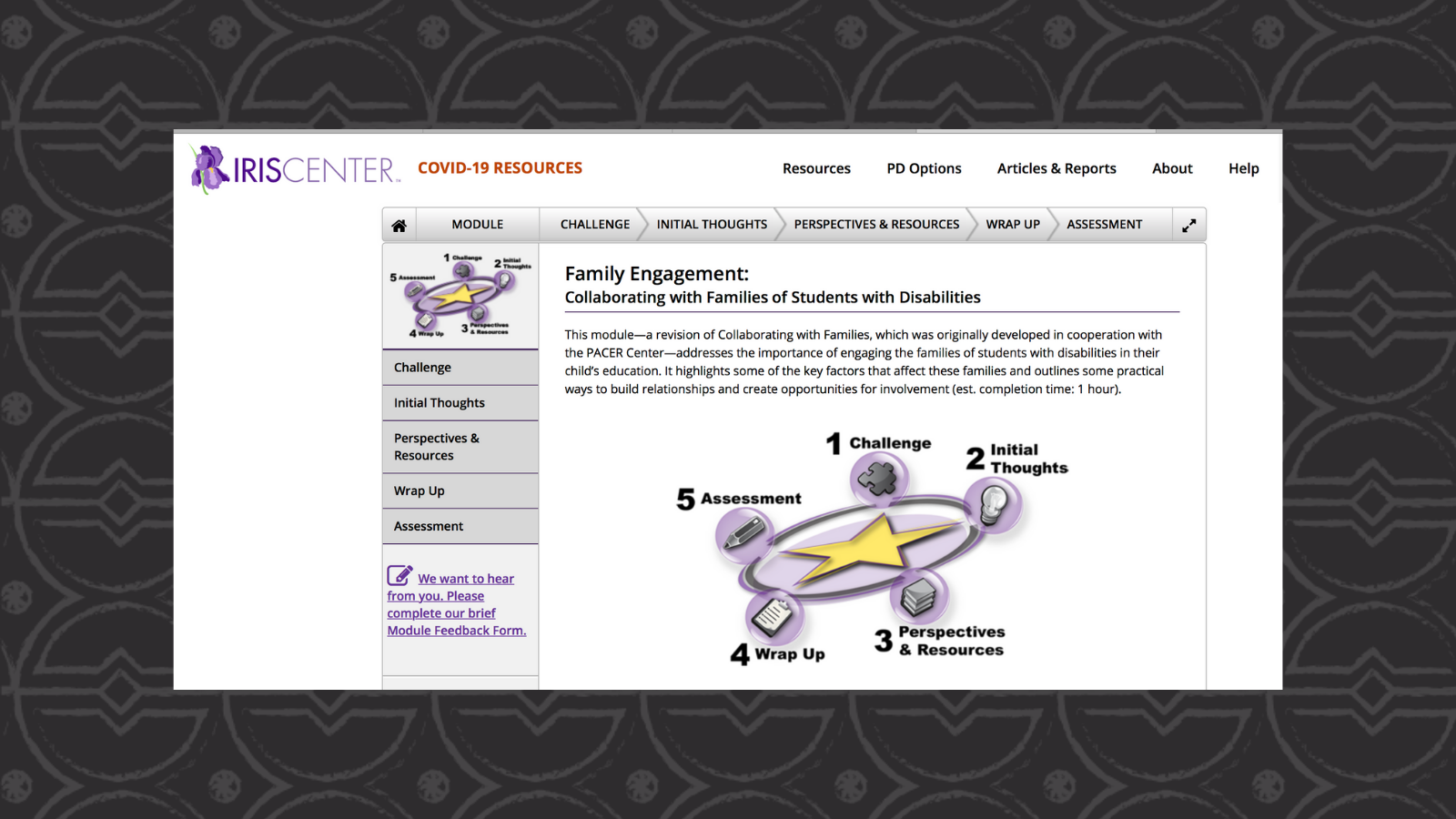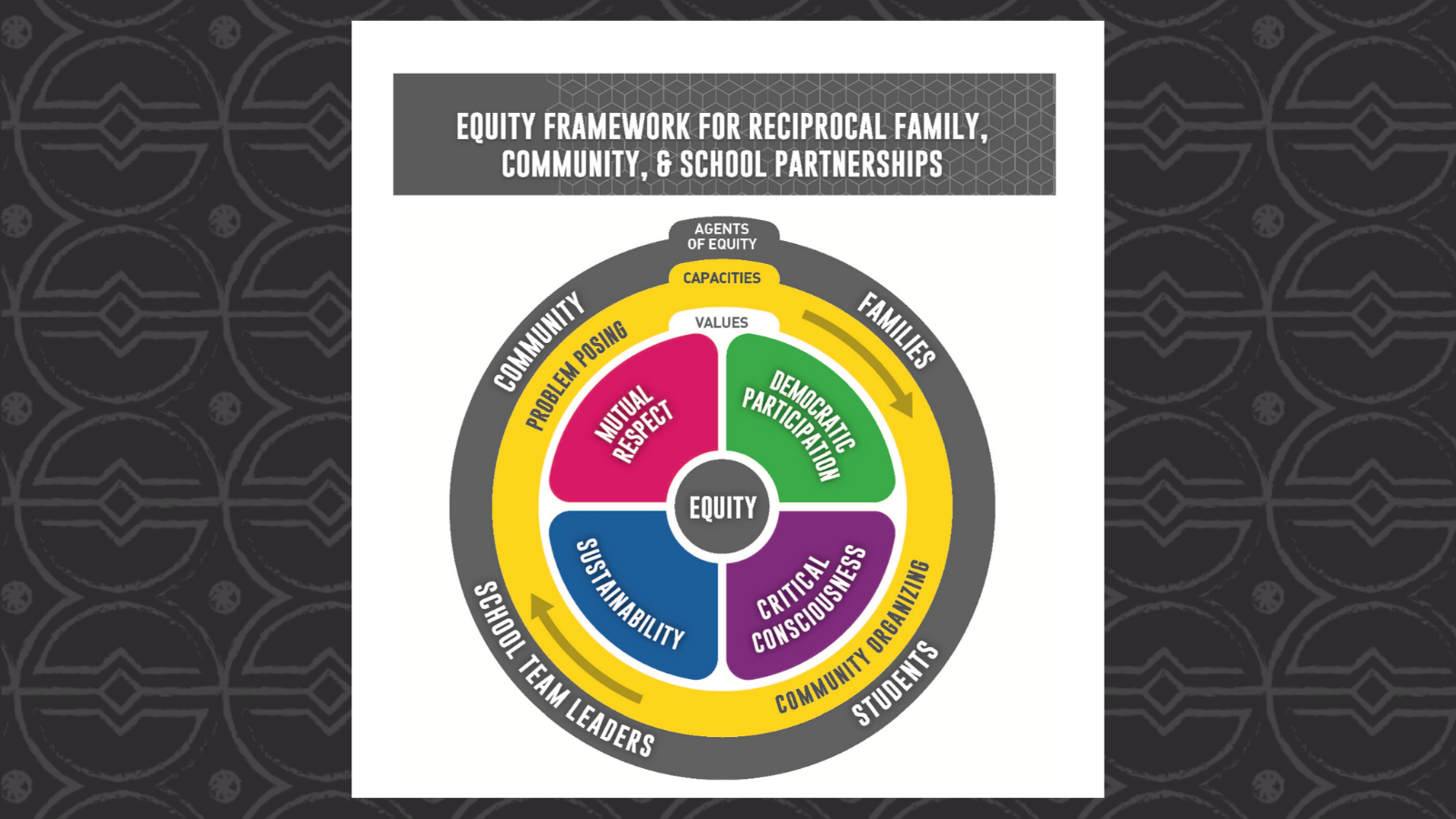1 Why Student and Community Voice Matter
Many current examples of district and school equity committees privilege adult voices over those of students and school staff voices over those of the community and families. While there is a certain convenience to this, we strongly urge that you elevate student voice, having at least as many students on your committee as adults, and make an effort to include community and family voices who are often excluded.
Please read on for a powerful example of the historical resonance of student voice, followed by a resource to help school leaders elevate student concerns. Following this is a collection of resources on strengthening family and community involvement and a message from E4L’s expert in critical community engagement, Dr. Cristitna Santamaría Graff.
In the video above, E4L’s Dr. Cristina Santamaría Graff explains the importance of including family and community voices in supporting equity initiatives in schools. It is important that all students, especially historically marginalized identities receive meaningful instruction that is accessible, relevant, informative, and fair.
Student Voice: Student Demands, December 1, 1969
Source: Black News
In an examination of Black literary activism in her book Cultivating Genius, researcher Gholdy Muhammad (2020) cites a December 1, 1969 article in the newspaper, Black News, that lists 15 demands by a group of Black High school students. The students demand:
- No more automatic suspension of high school students
- No more police or police aides inside NYC schools
- Strict adherence to fire regulations—doors to schools must be left open
- Open the schools daily to parent observation
- Community rehabilitation centers must be allowed to set up programs to treat known drug addicts in the school buildings
- Elimination of the General Course of Study
- Elimination of all Regents Exams
- Recognition in all NYC schools of two Black Holidays: May 19 (Malcolm X’s birthday) and January 15 (Martin Luther King Jr.’s birthday)
- Immediate alternation of teacher population and examinations to supply Black educators proportionate to the student population
- Complete examination of all books and educational supplies and materials used by the schools to their adequacy and relevancy
- The creation of school clubs along ethnic lines with facilities and funds from the G.O.
- Improved conditions for the students in the schools, such as music in the lunchrooms, more dances, improved athletic programs, and self-defense classes
- Teachers with a background related to the course they are teaching
- Creation of Student Faculty Council (equal representation), in each school which will make decisions on the following matters: curriculum, school staff, discipline, rules and regulations, etc.
- The reorganization of the high schools along community lines so that Black students will not be forced to go to schools in hostile communities and seek an education (43-44)
Despite these demands being made fifty years ago, many of them likely feel very relevant to the contemporary student and community concerns about culturally relevant education (or its absence). It is our job as educators not only to listen to students, but to provide the structure, resources, and power for them to enact real change in their schools. Students are able and eager to engage in conversations about their experiences in school and collaborate to develop realistic and actionable solutions if we are willing to make room for them and elevate their voices.
Please click on the images for further information. (Please note: the resources will open an external webpage).
Students on School Boards Toolkit
Source: SoundOut
SoundOut works with K-12 schools to suport student voice, student engagement, and meaningful student involvement. This toolkit focuses on students involving students on school boards but also makes a broader case for (and resources to support) student involvement in other types of school and district decision making.
TalkingPoints: a Multilingual App for Family/ School Communication
Talking Points is a free app from an education nonprofit for educators to communicate with families of all linguistic backgrounds. From the website: “Our multilingual technology platform connects and empowers families and teachers by using human and AI-powered, two-way translated communication and personalized content. This unique approach eliminates barriers including language, time, mindsets, and capacity to foster strong family engagement in development of students’ academic success.”
You can find more here: https://talkingpts.org/
Family Engagement: Collaborating with Families of Students with Disabilities
Source: IRIS Center
The IRIS Center is dedicated to improving outcomes for all students, especially those with disabilities. Here, they offer a free, one-hour module for educators to help engage families of students with disabilities.
Critical Practices for Anti-bias Education: Family and Community Engagement
Source: Teaching Tolerance*
This one-hour professional development module from Teaching Tolerance helps educators engaging families and communities in meaningful and culturally competent ways by developing strategies to tap into family and community wisdom, identify community issues that impact classroom culture, and identify methods of culturally sensitive communication. Includes a facilitator guide, readings, videos, and reflection guides.
*Teaching Tolerance is changing their name to Learning for Justice. To learn more about this change, please click here.
An Equity Framework for Reciprocal Family, Community, & School Partnerships
Source: Teemant & Associates
This educators’ brief comes from the extensive work of IUPUI School of Education faculty on family and community engagement. Here, they provide schools a framework for “taking action by joining with those who have been oppressed by schooling to communicate, think, and creatively transform processes of schooling towards equity.” Several of these authors will be leading Education for Liberation’s Family & Community Engagement strand beginning summer 2021—please reach out to us if your school is interested in participating.
English Learner Family Toolkit
From ESEA: “The toolkit provides information, tips, and resources that EL families may need as they prepare to enroll their children in public schools across the United States. The chapters are designed to assist families with navigating the U.S. school system by providing helpful questions they might ask teachers and school staff.”





